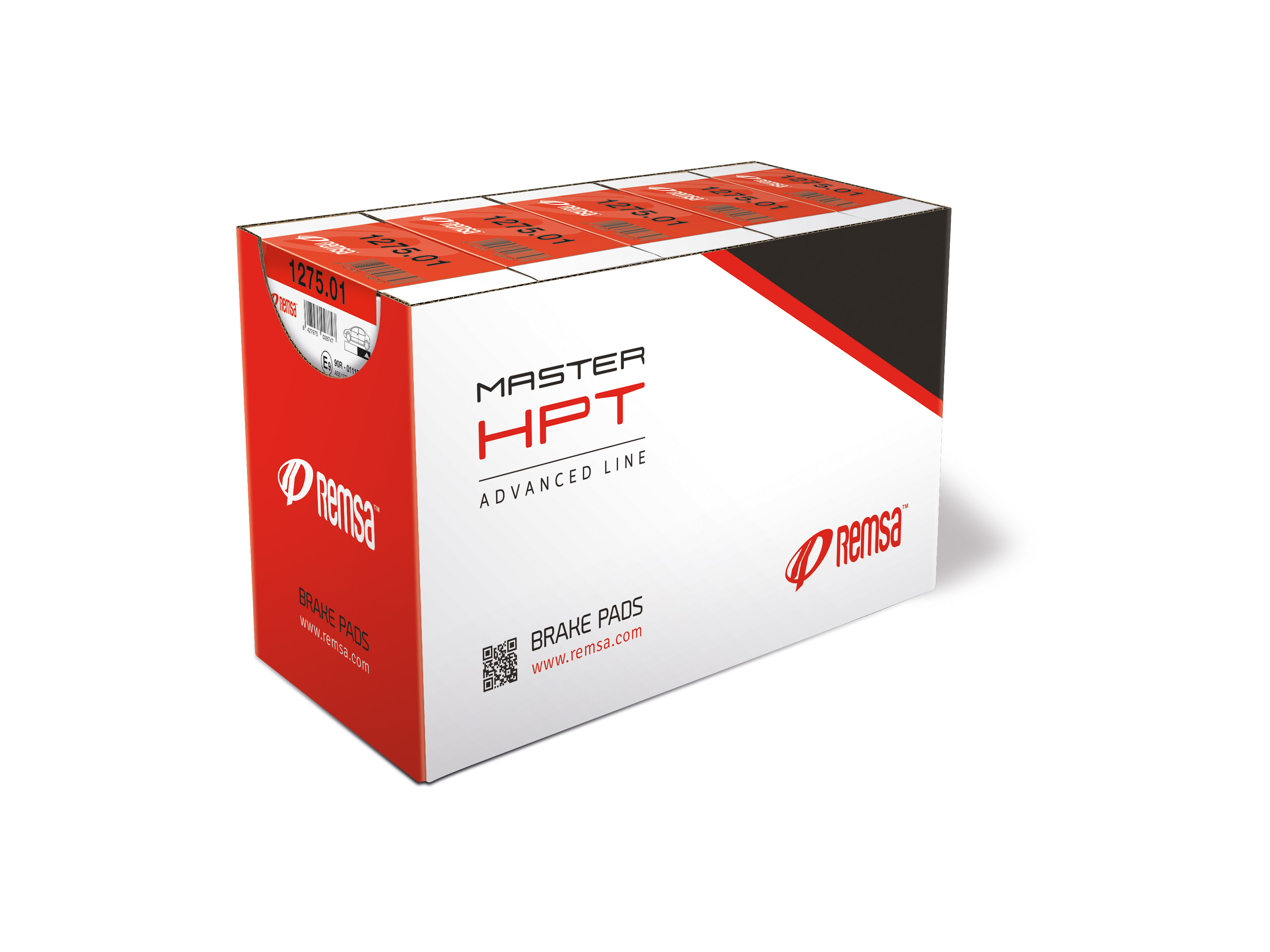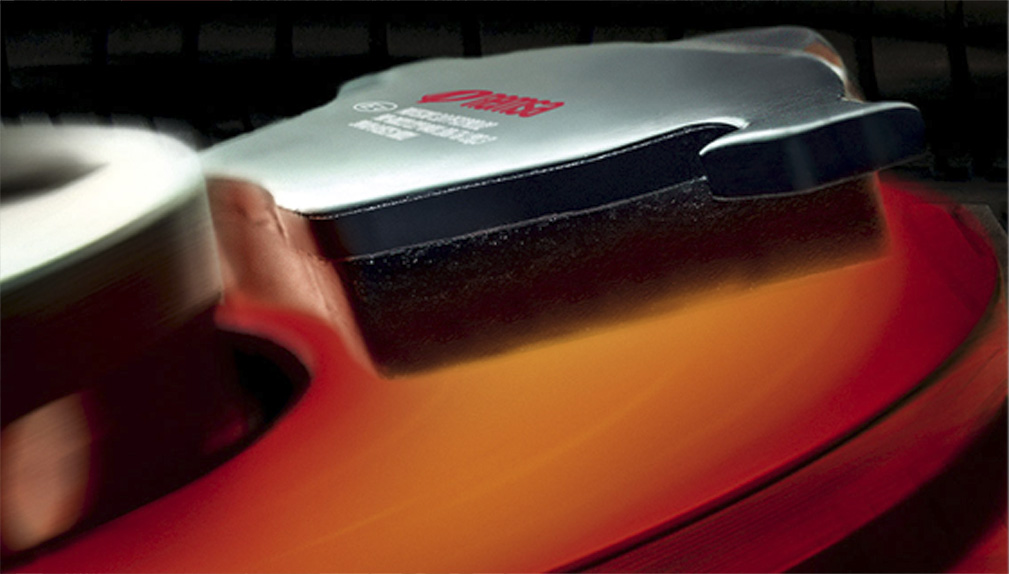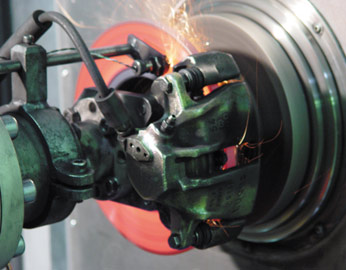Brake Pads
A fully integrated manufacturing strategy makes this range possible by having available in-house the production of related components such as backing plates and accessories.
With a production of more than 20 million sets-year, Remsa offers to his customers not only all the “know-how” of one of the main friction materials manufacturers in the world but the most comprehensive product range available in the friction industry. This product range covers European, American, Japanese, Korean and Australian applications with more than 2000 different part numbers on offer and with different levels of accessorization.
HPT (High pressure treatment)
![]() A new manufacturing process has been recently implemented in Remsa factories codenamed HPT (High Pressure Treatment). Now pads are scorched with electrical heated steel table system at 650ºC and accelerated heat interchange applying 10.000 N press force per brake pad thus ensuring that the complete surface of the pad is evenly cured. This process provides a shorter bedding-in period and an efficient brake operation just upon installation as typical O.E.M. pads performance required to work the most severe conditions:
A new manufacturing process has been recently implemented in Remsa factories codenamed HPT (High Pressure Treatment). Now pads are scorched with electrical heated steel table system at 650ºC and accelerated heat interchange applying 10.000 N press force per brake pad thus ensuring that the complete surface of the pad is evenly cured. This process provides a shorter bedding-in period and an efficient brake operation just upon installation as typical O.E.M. pads performance required to work the most severe conditions:
-
- HPT Involves extreme heat and pressure to scorch the pad surface 1 to 2 mm deep, which increases bedding-ability.
- HPT means safety because avoids the crystallization process typical of friction materials losing braking performance along the useful product life.
- HPT is healthy for the environment. During the scorching process, gases emitted are treated by post-bur process till they are rendered harmless. Is this process wouldn’t be done in our production plant, the drivers would suffer it negatives effects during the brake bedding in period and the gases would go up to the atmosphere.
Performance
R&D department is continuously testing both new friction material prototypes as uniformity production checking. Comprehensive Road and full scale dynamometer test bench AK-Master test evaluates the quality of Remsa brake pads searching the best performance and going beyond of the O.E. results of some of the most popular and extended European vehicles such as AK-Master shown on the next page.
ADT (Alpine descent test)
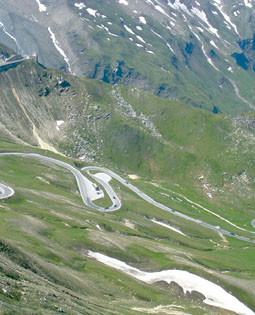 Alpine descent tests are fundamental in the development and research process of new friction material. These tests are usually performed by Remsa technical drivers in Austrian Alpine mountain called Grossglockner (Edelweisspitze 2571 m.) with a 12% average slope and 18% at the maximum fall.
Alpine descent tests are fundamental in the development and research process of new friction material. These tests are usually performed by Remsa technical drivers in Austrian Alpine mountain called Grossglockner (Edelweisspitze 2571 m.) with a 12% average slope and 18% at the maximum fall.
At the same time as new materials are tested on this road, several samples of the running production are checked following the same protocol and severe conditions as COP (conformity of production verification).
Slow descent test:
- Medium speed 40 Km/h (top speed 80 km/h).
- Long.: 16 Km.
- Time: 23 min.
- Final temperature: 600ºC.
Speed descent test:
- Medium speed 60km/h (top speed more than 120 Km/h)
- Long.: 16 Km,
- Time: 15’ 36’’.
- Final temperature: 800ºC.(more than 500º C since 10 corner).
Industrial Support
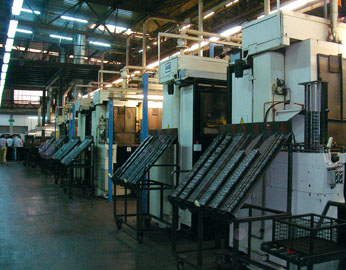 Today Remsa is regarded to be the top of European IAM (Independent aftermarket) friction materials manufacturers, with a production volume further 20 million pads sets a year.
Today Remsa is regarded to be the top of European IAM (Independent aftermarket) friction materials manufacturers, with a production volume further 20 million pads sets a year.
Brake Wear Sensor
 Remsa has a full range of Brake Wear Sensors, which complement our range of Brake Pads.
Remsa has a full range of Brake Wear Sensors, which complement our range of Brake Pads.
Remsa Wear Sensors are manufactured under the most stringent quality parameters, giving them a remarkable resistance both high temperatures of the brake calipers, as moisture and corrosion. Its structure remained unchanged, until the end of the useful life of Brake Pads when perform their function, providing additional safety to the brake system.
